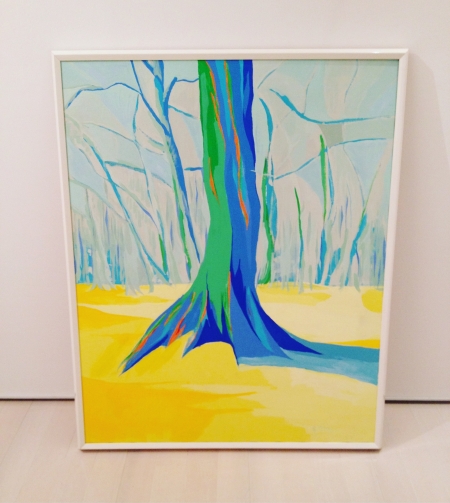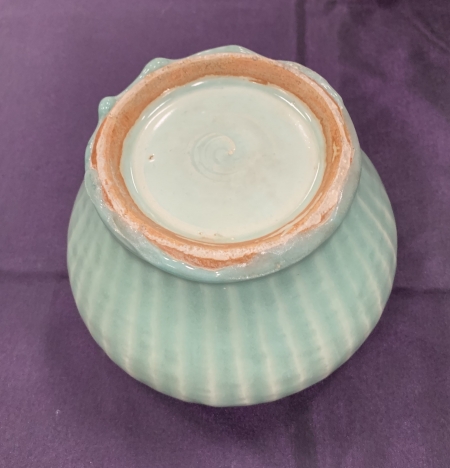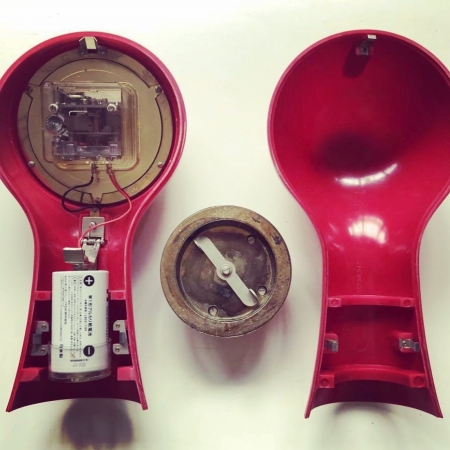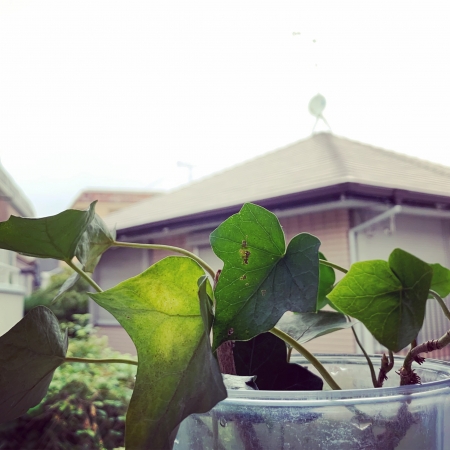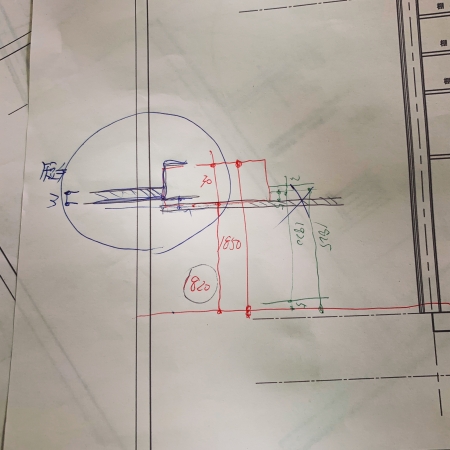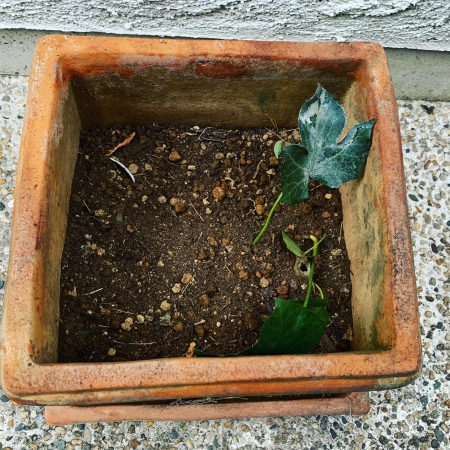繊細さというのは何かと比べないとわからないのか、繊細じゃない部分があるから、繊細さがわかるのか、だから、繊細さは相対的な価値基準になるのか。
細いものが林立する空間があったとする、例えば、自然の中でいえば竹林、竹が林立する風景は誰でも見たことがあるだろうが、その竹林を見て、繊細な空間が広がっているとはなかなか思わないかもしれない。
竹1本1本は、やはりよく見れば細い、節があるから余計に細く見えるかもしれない、特に竹林には他の木が生えているのを見ることはほとんど無いから、比べるものが無く、しかし竹は細いという認識が、松や杉に比べれば細いという認識があるから、植物のことをよく知らない人でも、竹は細いとなる。
では、竹には繊細という認識があるか、いや、要するに、認識があれば、比べるものが無くても繊細ということになる。
ただ、人の認識がつくられる時は、何かと比べた時になるから、竹が細い、という認識は、すでに比べられた結果に過ぎず、その認識が独り歩きして、絶対的な価値基準になり、それを利用して、例えば、数寄屋建築の床柱に竹を用いて、比べられる対象として、細いという認識があるものを置き、あとから付け足す、この場合、人ならば、人に比べれば竹など極細、繊細さが際立つから、数寄屋建築がより人がいることで繊細に見える、という仕掛けと考えたら、やはり、認識も、認識後の利用の段階でも、相対性が価値を決めることになるか。
そうなると、絶対的な繊細さというのは、存在するのだろうか、また、どうしたら存在するのだろうか。
数寄屋建築にしても、民家という比べる対象が存在するから、細く繊細に見える。もし、数寄屋建築だけしか存在しなければ、繊細さに気づかないかもしれない。
建築のディテールを考える時、最終的には全てを寸法に落とし込むが、その時によくあるのは、名建築を実測した結果、その建築に繊細さなイメージがあると、その建築のディテールの寸法を根拠に繊細さを出そうとすること、その建築をエビデンス代わりにするのか、どこどこ所属と一緒で、全く別の建築なので、全く根拠にもならない。その建築にとってはその寸法が繊細に見えただけのこと。
だから、名建築の実測はほとんどしなかった、もちろん、それは繊細さのこと以外にも理由があり、名建築を数値で理解しようとする行為は、その建築のその空間を理解することと本質的にずれているというか、押さえの寸法ありきで、建築空間がつくられているのではなくて、寸法は二次的に決まったものだからと考えていたので、その時は、もちろん、コルビュジエがモデュロールを使って設計した建築、例えば、ユニテダビタシオンやラ・トゥーレット修道院は宿泊して、一晩中寝ないで実測していたが、それでも、それはモデュロールを確かめるためで、名建築を数値で覚えようとしていなくて、自分の感覚で覚えようとしており、この場合、感覚は相対的で、過去に経験した建築と比べてどうかだが、自分の中に蓄積されていく感覚は絶対的なものになり、それが認識になる。
周りに比べるものがなければ、繊細さを表現することはできない、でも、繊細さを出したい時は、自分の過去の引き出しの中から、繊細さを引っ張りだして来てつくる、認識でつくる、それが絶対的な価値基準でつくるということ。
ただ、結局それは、別の表現になってしまう。比べるものが無いから、繊細さとは思われず、でも、作者がそこで繊細さに拘ると、間抜けなものしかできない、一見繊細だと、絶対的な繊細さだと表現しても、比べるものが無いから、繊細だとは認識されず、ただ細いもの、不恰好なものとなる場合がある。
ところが、この不恰好なものが、比べるものがあった場合にも起こる、明らかに、比べたら細く、材質も変えて繊細に見せようとしても起こる。
それは、そもそも、そのものが繊細では無い時、すなわち、相対的に繊細さを表現することはできても、絶対的に繊細で無いと、結局は繊細では無く不恰好になる。それは、当たり前といえばそうだが意外と多い事例のような気がする。
結局、絶対的な価値基準を持つ作者しだいだが、かといって、相対性も必要になるから、絶対と相対のバランス、出し入れが繊細さを決め、そのバランスをどうするかが設計であり、そのバランスを決めるのが設計者で、そのバランスの良し悪しは設計者の絶対的な価値基準の質というかレベルしだいということになる。
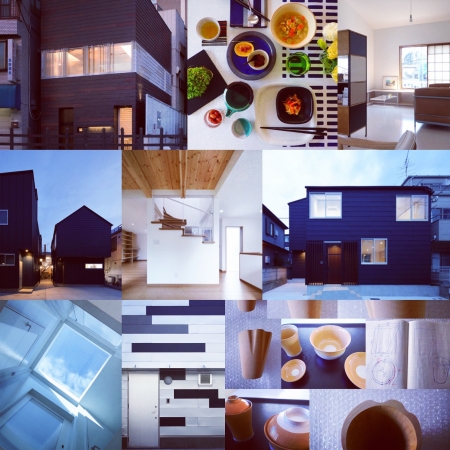
"Absolute, relative, recognition and design"
Do you not understand the sensitivity unless you compare it with something, or do you know the sensitivity because there are parts that are not delicate, so is the sensitivity a relative value standard?
Suppose that there was a space where thin objects stand, for example, in the nature, anyone would have seen a bamboo forest, the scenery where bamboo stands, but when you saw the bamboo forest, a delicate space spread out You may not feel like you are.
Each bamboo is thin, if you look closely, it may look extra thin because there are knots, especially because there are few other trees growing in the bamboo forest, so there is no comparison. However, there is a perception that bamboo is thin compared to pine and cedar, so even if you are not familiar with plants, bamboo is thin.
So, there is a perception that bamboo is delicate, or in short, if there is recognition, it means that even if there is nothing to compare, it is delicate.
However, since the recognition of human beings is when it is compared to something, the recognition that bamboo is thin is just the result of the comparison, and that recognition walks alone and becomes an absolute value standard, Using it, for example, using bamboo on the floor pillar of a Sukiya building, put something that is recognized as thin as a target to be compared, and add it later. In this case, if it is a person, it is extremely fine, such as bamboo, compared to a person However, if you think that the sukiya architecture looks more delicate because there are more people because the subtlety stands out, will the relativity determine the value at the recognition and use stage after recognition?
Then, does absolute delicacy exist and how does it exist?
Even if it is a sukiya building, it looks thin and delicate because there is an object to compare as a private house. If there is only Sukiya architecture, you may not notice the delicacy.
When thinking about the details of an architecture, eventually all of them are reduced to dimensions, but it is often the case that when measuring the famous architecture, if there is a delicate image of the architecture, the dimensions of the details of the architecture are reduced. There is no basis for trying to give subtlety to the grounds, whether the architecture should be replaced by evidence, where it belongs, where it belongs, and completely different architecture. For the architecture, the dimensions just looked delicate.
So, I did not actually measure a famous building. Of course, there was a reason other than delicacy, and the act of trying to understand a famous building numerically is essentially understanding that space of that building. I thought that the dimensions were determined in a secondary way, rather than the construction space being created with the dimensions of the press, and of course, Corbusier was of course Modroll. For example, the unite dabitacion and the La Tourette monastery stayed overnight and measured without sleeping all night, but it is still to confirm the modularity, so let's memorize the famous architecture numerically I am trying to remember it with my own sense. In this case, the sense is relative, compared to the architecture I experienced in the past, but the feeling that is accumulated in me. Becomes a thing is absolute, it comes to recognition.
You can't express delicacy if you don't have something to compare to the surroundings, but when you want to bring out delicacy, you draw out the delicacy from your past drawers. That means creating on an absolute value basis.
But in the end it becomes a different expression. Because there is nothing to compare, it does not seem to be delicate, but if the author is concerned with the sensitivity there, only the goofy thing can be done, but if it is delicate at first glance, there is nothing to compare even if expressed as absolute delicacy , It may not be recognized as delicate, it may be just thin or ugly.
However, this unpleasant thing happens even when there is something to compare. Obviously, it is thin when compared, and even when trying to make it look delicate by changing the material.
In the first place, when it is not delicate, that is, although it can express relatively delicate, if it is not absolutely delicate, it will eventually become dull and ugly. That seems to be the case, but it seems like a surprising number of cases.
After all, it is up to the author who has an absolute value standard, but since relativity is also necessary, the balance between absolute and relative, the in and out determines the delicateness, the design is what to do with that balance, the balance The designer decides the balance, and the balance is determined by the quality or level of the designer's absolute value standards.

